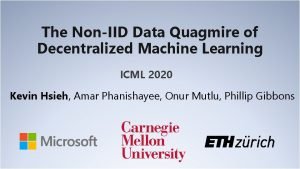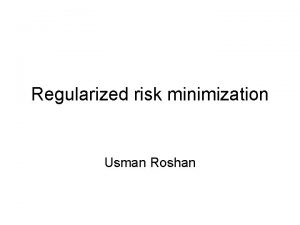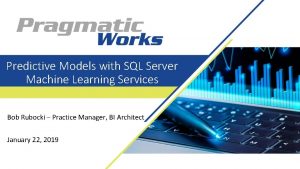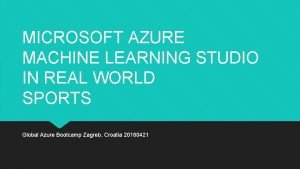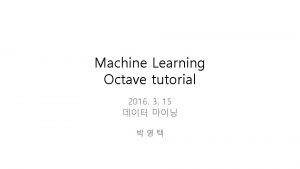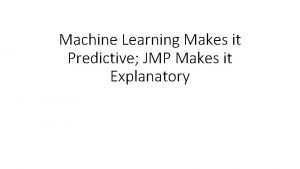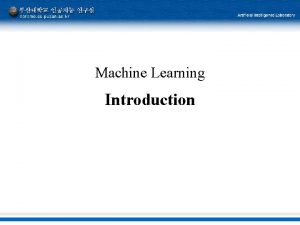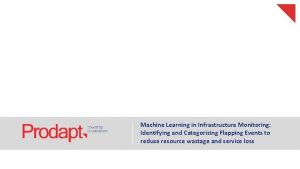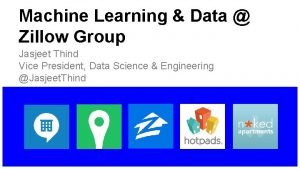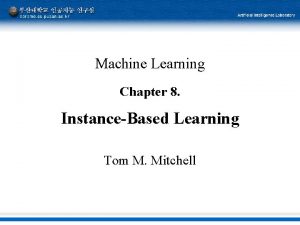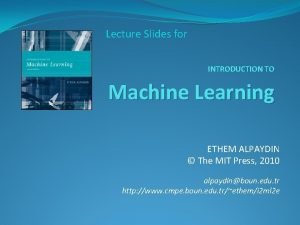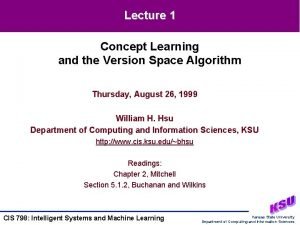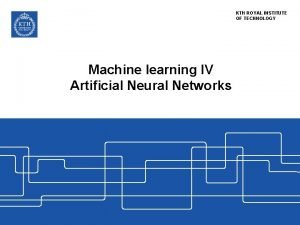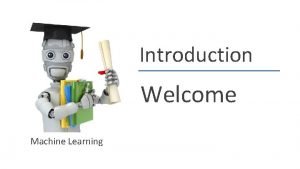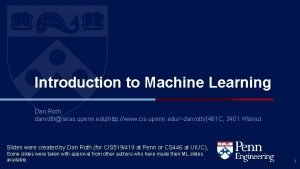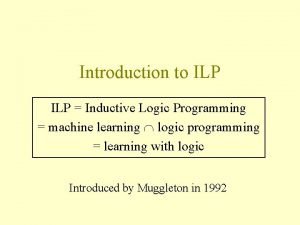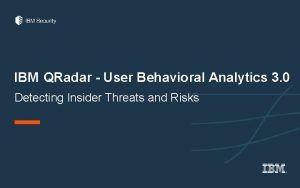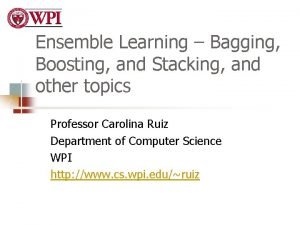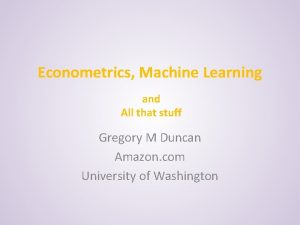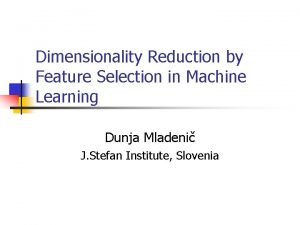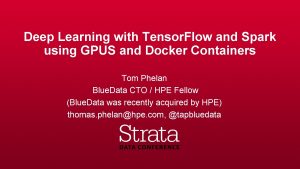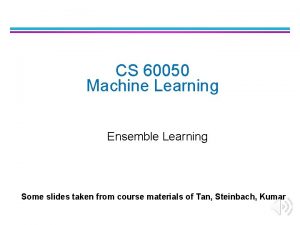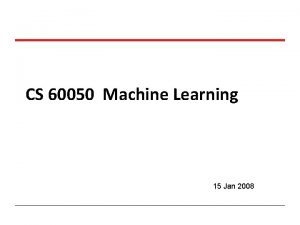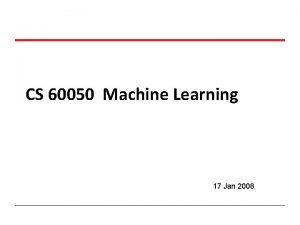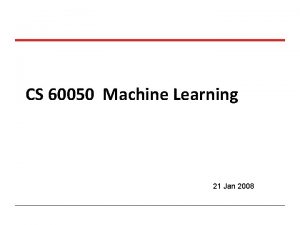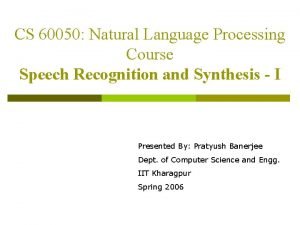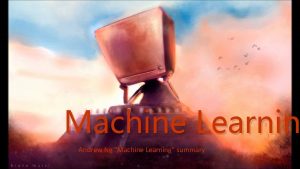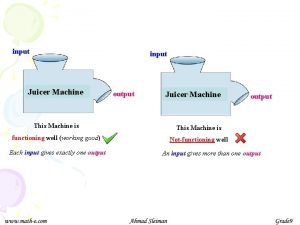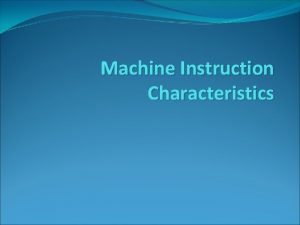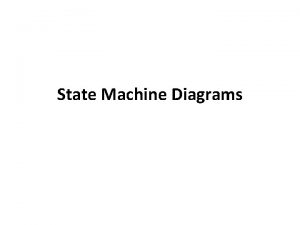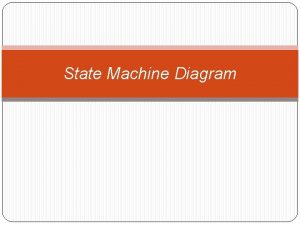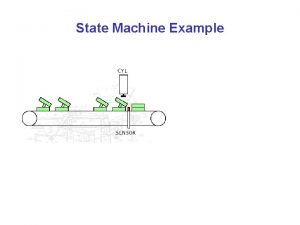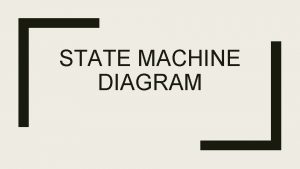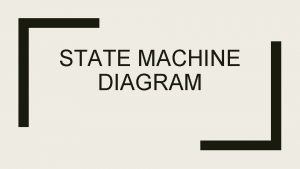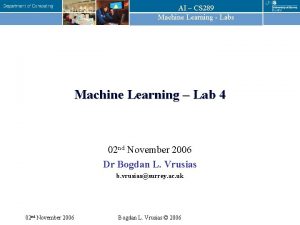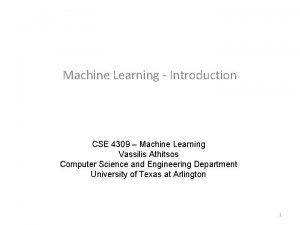CS 60050 Machine Learning What is Machine Learning








































- Slides: 40

CS 60050 Machine Learning

What is Machine Learning? Adapt to / learn from data To optimize a performance function Can be used to: Extract knowledge from data Learn tasks that are difficult to formalise Create software that improves over time

When to learn Human expertise does not exist (navigating on Mars) Humans are unable to explain their expertise (speech recognition) Solution changes in time (routing on a computer network) Solution needs to be adapted to particular cases (user biometrics) Learning involves Learning general models from data Data is cheap and abundant. Knowledge is expensive and scarce Customer transactions to computer behaviour Build a model that is a good and useful approximation to the data

Applications Speech and hand-writing recognition Autonomous robot control Data mining and bioinformatics: motifs, alignment, … Playing games Fault detection Clinical diagnosis Spam email detection Credit scoring, fraud detection Web mining: search engines Market basket analysis, Applications are diverse but methods are generic

Polynomial Curve Fitting

0 th Order Polynomial

1 st Order Polynomial

3 rd Order Polynomial

9 th Order Polynomial

Over-fitting Root-Mean-Square (RMS) Error:

Data Set Size: 9 th Order Polynomial

Data Set Size: 9 th Order Polynomial

Model Selection Cross-Validation


Example 2: Speech recognition Data representation: features from spectral analysis of speech signals (two in this simple example). Task: Classification of vowel sounds in words of the form “h -? -d” Problem features: Highly variable data with same classification. Good feature selection is very important. Speech recognition is often broken into a number of smaller tasks like this.


Example 3: DNA microarrays DNA from ~10000 genes attached to a glass slide (the microarray). Green and red labels attached to m. RNA from two different samples. m. RNA is hybridized (stuck) to the DNA on the chip and green/red ratio is used to measure relative abundance of gene products.


DNA microarrays Data representation: ~10000 Green/red intensity levels ranging from 10 -10000. Tasks: Sample classification, gene classification, visualisation and clustering of genes/samples. Problem features: High-dimensional data but relatively small number of examples. Extremely noisy data (noise ~ signal). Lack of good domain knowledge.

Projection of 10000 dimensional data onto 2 D using PCA effectively separates cancer subtypes.

Probabilistic models A large part of the module will deal with methods that have an explicit probabilistic interpretation: Good for dealing with uncertainty eg. is a handwritten digit a three or an eight ? Provides interpretable results Unifies methods from different fields

Many of the next slides borrowed from material from Raymond J. Mooney University of Texas at Austin

Designing a Learning System Choose the training experience Choose exactly what is too be learned, i. e. the target function. Choose how to represent the target function. Choose a learning algorithm to infer the target function from the experience. Learner Environment/ Experience Knowledge Performance Element

Sample Learning Problem Learn to play checkers from self-play We will develop an approach analogous to that used in the first machine learning system developed by Arthur Samuels at IBM in 1959.

Training Experience Direct experience: Given sample input and output pairs for a useful target function. Checker boards labeled with the correct move, e. g. extracted from record of expert play Indirect experience: Given feedback which is not direct I/O pairs for a useful target function. Potentially arbitrary sequences of game moves and their final game results. Credit/Blame Assignment Problem: How to assign credit blame to individual moves given only indirect feedback?

Source of Training Data Provided random examples outside of the learner’s control. Negative examples available or only positive? Good training examples selected by a “benevolent teacher. ” “Near miss” examples Learner can query an oracle about class of an unlabeled example in the environment. Learner can construct an arbitrary example and query an oracle for its label. Learner can design and run experiments directly in the environment without any human guidance.

Training vs. Test Distribution Generally assume that the training and test examples are independently drawn from the same overall distribution of data. IID: Independently and identically distributed If examples are not independent, requires collective classification. If test distribution is different, requires transfer learning.

Choosing a Target Function What function is to be learned and how will it be used by the performance system? For checkers, assume we are given a function for generating the legal moves for a given board position and want to decide the best move. Could learn a function: Choose. Move(board, legal-moves) → best-move Or could learn an evaluation function, V(board) → R, that gives each board position a score for how favorable it is. V can be used to pick a move by applying each legal move, scoring the resulting board position, and choosing the move that results in the highest scoring board position.

Ideal Definition of V(b) If b is a final winning board, then V(b) = 100 If b is a final losing board, then V(b) = – 100 If b is a final draw board, then V(b) = 0 Otherwise, then V(b) = V(b´), where b´ is the highest scoring final board position that is achieved starting from b and playing optimally until the end of the game (assuming the opponent plays optimally as well). Can be computed using complete mini-max search of the finite game tree.

Approximating V(b) Computing V(b) is intractable since it involves searching the complete exponential game tree. Therefore, this definition is said to be nonoperational. An operational definition can be computed in reasonable (polynomial) time. Need to learn an operational approximation to the ideal evaluation function.

Representing the Target Function Target function can be represented in many ways: lookup table, symbolic rules, numerical function, neural network. There is a trade-off between the expressiveness of a representation and the ease of learning. The more expressive a representation, the better it will be at approximating an arbitrary function; however, the more examples will be needed to learn an accurate function.

Linear Function for Representing V(b) In checkers, use a linear approximation of the evaluation function. bp(b): number of black pieces on board b rp(b): number of red pieces on board b bk(b): number of black kings on board b rk(b): number of red kings on board b bt(b): number of black pieces threatened (i. e. which can be immediately taken by red on its next turn) rt(b): number of red pieces threatened

Obtaining Training Values Direct supervision may be available for the target function. < <bp=3, rp=0, bk=1, rk=0, bt=0, rt=0>, 100> (win for black) With indirect feedback, training values can be estimated using temporal difference learning (used in reinforcement learning where supervision is delayed reward).

Lessons Learned about Learning can be viewed as using direct or indirect experience to approximate a chosen target function. Function approximation can be viewed as a search through a space of hypotheses (representations of functions) for one that best fits a set of training data. Different learning methods assume different hypothesis spaces (representation languages) and/or employ different search techniques.

Various Function Representations Numerical functions Linear regression Neural networks Support vector machines Symbolic functions Decision trees Rules in propositional logic Rules in first-order predicate logic Instance-based functions Nearest-neighbor Case-based Probabilistic Graphical Models Naïve Bayesian networks Hidden-Markov Models (HMMs) Probabilistic Context Free Grammars (PCFGs) Markov networks

Various Search Algorithms Gradient descent Perceptron Backpropagation Dynamic Programming HMM Learning PCFG Learning Divide and Conquer Decision tree induction Rule learning Evolutionary Computation Genetic Algorithms (GAs) Genetic Programming (GP) Neuro-evolution

Evaluation of Learning Systems Experimental Conduct controlled cross-validation experiments to compare various methods on a variety of benchmark datasets. Gather data on their performance, e. g. test accuracy, training-time, testing-time. Analyze differences for statistical significance. Theoretical Analyze algorithms mathematically and prove theorems about their: Computational complexity Ability to fit training data Sample complexity (number of training examples needed to learn an accurate function)

History of Machine Learning 1950 s Samuel’s checker player Selfridge’s Pandemonium 1960 s: Neural networks: Perceptron Pattern recognition Learning in the limit theory Minsky and Papert prove limitations of Perceptron 1970 s: Symbolic concept induction Winston’s arch learner Expert systems and the knowledge acquisition bottleneck Quinlan’s ID 3 Michalski’s AQ and soybean diagnosis Scientific discovery with BACON Mathematical discovery with AM

History of Machine Learning 1980 s: Advanced decision tree and rule learning Explanation-based Learning (EBL) Learning and planning and problem solving Utility problem Analogy Cognitive architectures Resurgence of neural networks (connectionism, backpropagation) Valiant’s PAC Learning Theory Focus on experimental methodology 1990 s Data mining Adaptive software agents and web applications Text learning Reinforcement learning (RL) Inductive Logic Programming (ILP) Ensembles: Bagging, Boosting, and Stacking Bayes Net learning

History of Machine Learning 2000 s Support vector machines Kernel methods Graphical models Statistical relational learning Transfer learning Sequence labeling Collective classification and structured outputs Computer Systems Applications Compilers Debugging Graphics Security (intrusion, virus, and worm detection) E mail management Personalized assistants that learn Learning in robotics and vision
 Concept learning task in machine learning
Concept learning task in machine learning Analytical learning in machine learning
Analytical learning in machine learning Pac learning model in machine learning
Pac learning model in machine learning Machine learning t mitchell
Machine learning t mitchell Inductive and analytical learning
Inductive and analytical learning Inductive analytical approach to learning
Inductive analytical approach to learning Instance based learning in machine learning
Instance based learning in machine learning Inductive learning machine learning
Inductive learning machine learning First order rule learning in machine learning
First order rule learning in machine learning Lazy learners vs eager learner
Lazy learners vs eager learner Deep learning vs machine learning
Deep learning vs machine learning Cuadro comparativo de e-learning b-learning y m-learning
Cuadro comparativo de e-learning b-learning y m-learning Finite state machine vending machine example
Finite state machine vending machine example Moore and mealy machine
Moore and mealy machine Moore machine to mealy machine
Moore machine to mealy machine Differentiate between simple machine and compound machine
Differentiate between simple machine and compound machine The non-iid data quagmire of decentralized machine learning
The non-iid data quagmire of decentralized machine learning Regularized risk minimization
Regularized risk minimization Sql server predictive analytics
Sql server predictive analytics Azure machine learning studio
Azure machine learning studio Machine learning octave
Machine learning octave Principal component analysis jmp
Principal component analysis jmp Mitchell machine learning
Mitchell machine learning Machine learning infrastructure monitoring
Machine learning infrastructure monitoring Valerie du preez
Valerie du preez Zillow data mining
Zillow data mining Machine learning tom
Machine learning tom Introduction to machine learning ethem alpaydin
Introduction to machine learning ethem alpaydin Version space learning
Version space learning Machine learning kth
Machine learning kth Introduction to machine learning andrew ng
Introduction to machine learning andrew ng Andrew ng introduction to machine learning
Andrew ng introduction to machine learning Hypothesis space in machine learning
Hypothesis space in machine learning Ilp machine learning
Ilp machine learning Qradar uba machine learning
Qradar uba machine learning Xkcd
Xkcd Avoiding discrimination through causal reasoning
Avoiding discrimination through causal reasoning Bagging boosting stacking in machine learning
Bagging boosting stacking in machine learning Econometrics machine learning
Econometrics machine learning Feature reduction in machine learning
Feature reduction in machine learning What is tensor in machine learning
What is tensor in machine learning
















